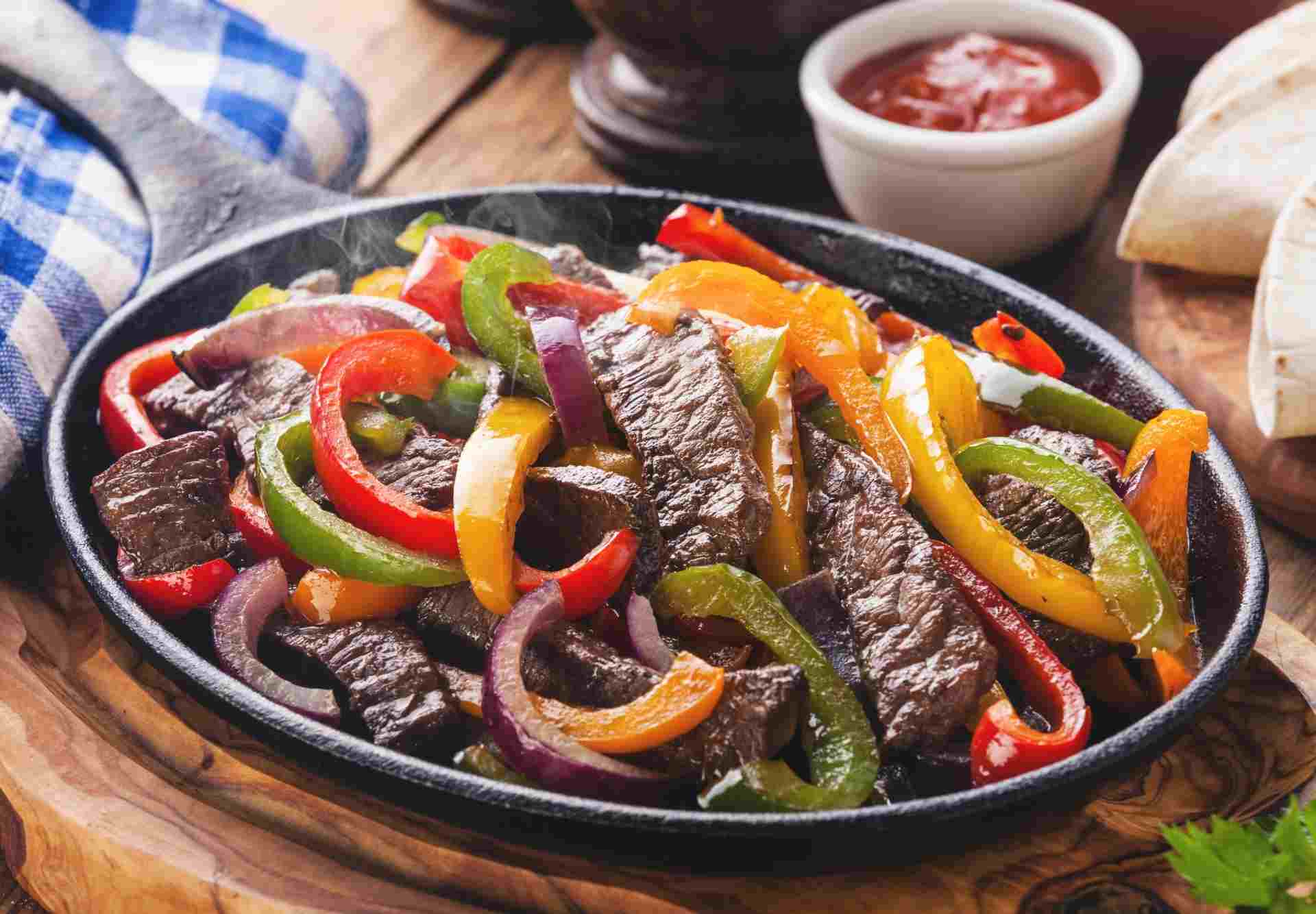Hunan Beef is a dish that you may have previously eaten from a takeaway restaurant.
------Advertisement-----
The quality of the Americanized version varies widely depending on the cook. I remember asking my dad and other Chinese cooks about Hunan Beef, wondering what all the fuss was about. They themselves admitted ignorance about the dish outside of the restaurant’s preparation.
What distinguishes SICHUAN from HUNAN?
Both Hunanese and Sichuanese cuisines are known for their heavy usage of chili peppers, although these two styles have notable distinctions. Even though Sichuan cuisine has been increasingly well-known outside of China in recent years, many of you may be wondering what Hunan cuisine is like.
------Advertisement-----
The main distinction is in the use of numbing Sichuan peppercorns for flavor, in addition to the more traditional usage of chili peppers. Hunanese cuisine is known for its “gan la” or “dry hot” flavor, as opposed to the more common “ma la” or “spicy numbing” flavor, achieved by combining spicy peppers with a numbing ingredient.
More garlic, fresh ginger, fermented black beans, various pickled ingredients (such as pickled long beans), and cured/smoked items characterize the cuisine of Hunan province, which is known for its purely spicy meals. Because of the lack of sauce in traditional Hunan stir-fries, these meals tend to be drier than their oilier Sichuan counterparts.
------Advertisement-----
This has led many Chinese to believe that Hunan cuisine can really be spicier than Sichuan cuisine.
PEPPER SELECTION
Since we first published this blog, our pepper-loving readers have kept us on our toes when determining the appropriate heat level for various peppers.
Using peppers is essential for Hunan Beef, but the specific peppers you use are up to you. Both savory and sweet varieties are favorites. To increase the heat, replace some of the poblano and holland peppers with Fresnos or jalapenos. This year, our garden produced an abundance of peppers, so we used a variety.
You should know that the dried chili peppers, whether you chop them to release the seeds or leave them whole, can significantly increase the dish’s level of heat.
INGREDIENTS:
FOR THE BEEF:
- 1 pound of flank steak (1/4-inch thick)
- 2 tablespoons of water
- 1/3 cup of cornstarch
- 1 teaspoon of oyster sauce
- 1/4 teaspoon of baking soda
REST OF THE DISH:
- 8 whole dried chili peppers
- 5 cloves of garlic, sliced
- 2 scallions (2-inch lengths in angle)
- 2 deseeded banana peppers
- 1 sliced tablespoon fresh ginger
- 1 deseeded small green bell pepper or poblano pepper
- 1 deseeded small red bell pepper
- 1 deseeded red Holland pepper
- 1/2 cup of thinly sliced shallots
- 1/3 cup of vegetable or canola oil (for frying)
- 2 1/2 tablespoons of soy sauce
- 2 tablespoons of hot water
- 2 tablespoons of Shaoxing wine
- 2 tablespoons of rinsed fermented black beans
- 1/2 teaspoon of granulated sugar
- 1/2 teaspoon of Chinese black vinegar
- 1/4 teaspoon of white pepper
INSTRUCTIONS:
PREPARATION:
- Sliced flank steak, baking soda, water, and oyster sauce should all be mixed together in a medium basin. Rub all these seasonings into the steak until the meat has absorbed all the liquid. Take 30 minutes to marinate.
- Cornstarch should be used to lightly coat all of the beef pieces. Put aside for later use.
- Prepare the fresh peppers by slicing them thinly and crosswise. The dried red peppers should be put aside. If you don’t like your Hunan Beef particularly hot, don’t open them or chop them.
- Dissolve the sugar in 2 tbsp of boiling water by stirring. Soy sauce, ground white pepper, and Chinese black vinegar should be added. Combine thoroughly, then put aside for later use.
- The wok should be heated until it smokes over high heat. In three batches, heat a third cup of oil in the wok and sear the steak on both sides until browned and crisp. Make sure the wok and oil are sizzling hot each time you add meat.
- The Beef should be moved to one side of the wok to drain. You can move the steak to a plate or sheet pan because the oil will have settled to the bottom. Get rid of the wire racks and paper towels!
- When you’re done cooking the Beef, drain everything except about 2 tablespoons of the oil from the pan. Now is an excellent time to clean a burned-up wok from the frying procedure. Getting the beef flavor from frying is great, but you don’t want any charred portions in your stir-fry.
ASSEMBLY:
- The stir-fry can be assembled while the wok is heating up. Fry the sliced ginger for about 30 seconds or until caramelized.
- Put in the shallots afterward. Keep frying for another 30 seconds before adding the fresh peppers (except for the red holland or Fresno peppers). To obtain a good sear on the peppers, turn the heat high and stir-fry for 1 minute.
- Make room for the dried chili peppers on the wok’s bottom. Put them in the oil and let them fry for 20 seconds.
- The next step is to surround the wok with a layer of Shaoxing wine. Put in the chopped garlic, fermented black beans, and red Holland or Fresno peppers. Keep stirring-frying for another 30-60 seconds at high heat.
- Then, place the fried meat on top and pour the sauce over it. Stir-fry everything together for 20 seconds at maximum heat. Toss in the scallions. Keep stirring-frying until almost all of the sauce has burned off.
